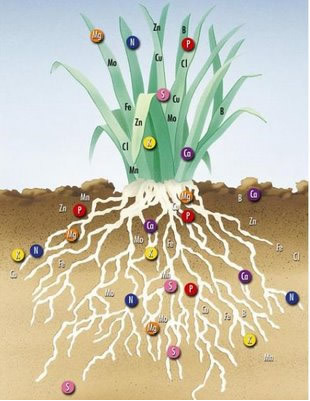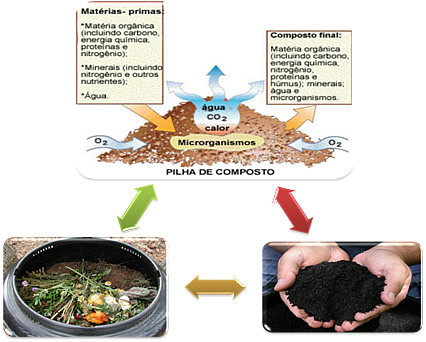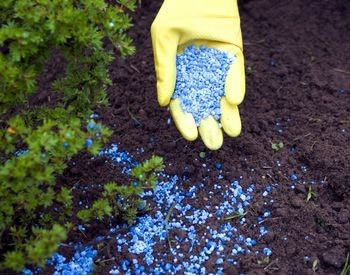In order to develop, the plant extracts macronutrients and micronutrients from the soil, which are composed of atoms of chemical elements that make up its tissues. Micronutrients are consumed in small amounts, while macronutrients are consumed in large scale and are composed mainly of carbon, hydrogen and oxygen, obtained by means of carbon dioxide (CO2) present in air and water (H2O).
Other essential elements for plant growth are: sulfur, nitrogen, phosphorus and potassium. These nutrients are removed from the soil and then, when the plants die, they decompose and return these nutrients to the soil, which will enable other plants to use these nutrients to grow up.

However, the human being interferes in this cycle, harvesting the crops. So, as time goes by, the nutrients in the earth are going to disappear, impoverishing the soil, which can no longer be used for planting. Thus, it is necessary that man himself enrich the soil with these nutrients. This is done through fertilizers, that can be organic or inorganic.
See below what differs these two types of fertilizers and which is considered the best:
- Organic Fertilizer:are fertilizers obtained through matter of plant or animal origin, such as manure, flour, bagasse, peel and vegetable remains, decomposed or still in the stage of decomposition. These materials undergo decomposition and can be produced by man through the compost.
One of the advantages of organic fertilizer is that, with composting, municipal solid urban waste of organic origin is recycled. It is also possible to recycle such waste disposed together with sludge generated in domestic sewage treatment plants, thus minimizing the waste produced. In addition, there is still a decrease in the amount of organic waste (which is deposited in rivers) and leachate (which infiltrates the soil, reaching groundwater).
In composting, the organic matter is segregated and subjected to a treatment consisting of two basic stages: a digestion (fermentation caused by microorganisms, the main ones being bacteria, fungi and actinomycetes. At this stage, the material reaches the state of biostabilization and decomposition is not yet complete) and the maturation (the mass in fermentation reaches humification, giving rise to a mass called humus, state in which the compost is presented as a soil improver and fertilizer).

The fertilizer generated is called compound. It is rich in macronutrients and incorporates, in minimal doses, micronutrients as well. In addition, it increases bacterial flora and microfauna, essential in the formation of the humus.
- Inorganic Fertilizer:are fertilizers obtained from mineral extraction or petroleum refining. Some examples are: chile phosphates, carbonates, chlorides and saltpeter.

The advantage of this type of fertilizer is that, as they are in ionic form, their nutrients are more easily absorbed by plants and the result is faster.
Furthermore, they have a defined chemical composition and the organic ones do not; so that it is possible to carry out with them precise calculations on the amount to be used in each case. This is extremely important as the excessive use of inorganic fertilizers can cause environmental disasters such as change in the chemical composition of the soil, making it less productive and, in the long term, causing damage to the ecosystem.
That's why many environmentalists advocate the use of organic fertilizers, saying they pose no environmental risk. However, those who defend inorganic fertilizers say that organic ones are only viable for small crops and that they can contaminate the soil if there are infectious agents in the animals' feces.
One way out, in the latter case, is to use only vegetable waste to produce organic fertilizer. But a good way to compensate for the negative effects of each method of fertilization is to know the properties of the soil that you are working on and carry out a balanced combination of all these techniques.
By Jennifer Fogaça
Graduated in Chemistry
Source: Brazil School - https://brasilescola.uol.com.br/quimica/adubos-organicos-inorganicos.htm

